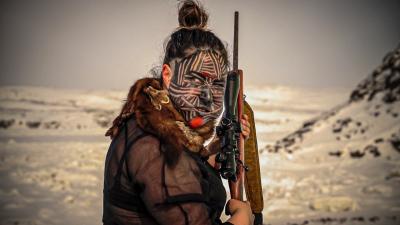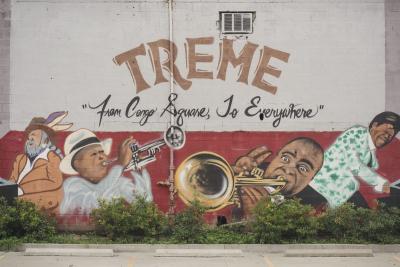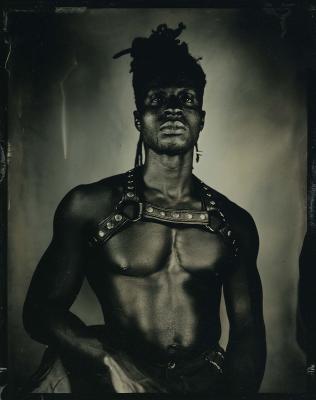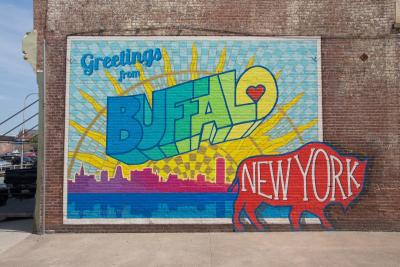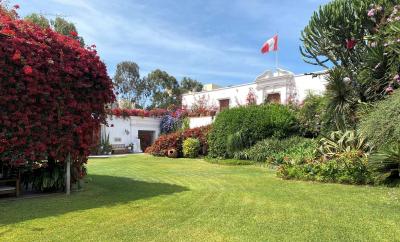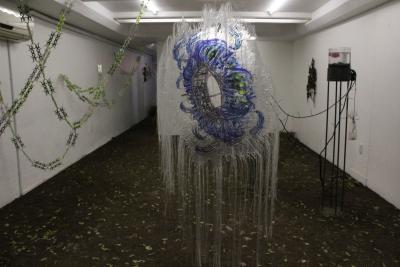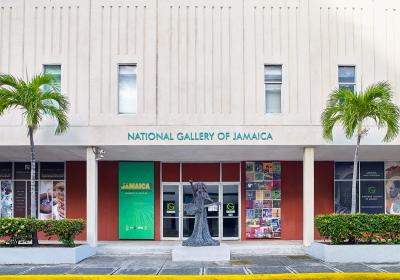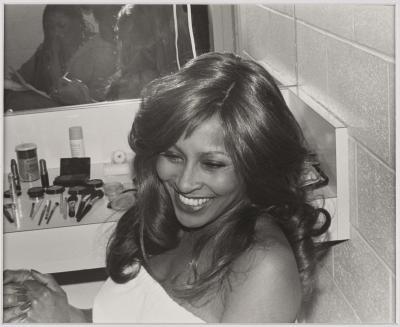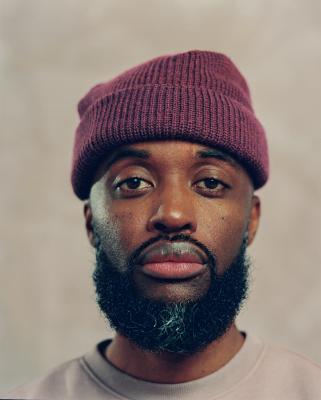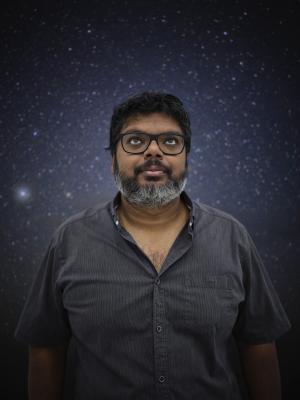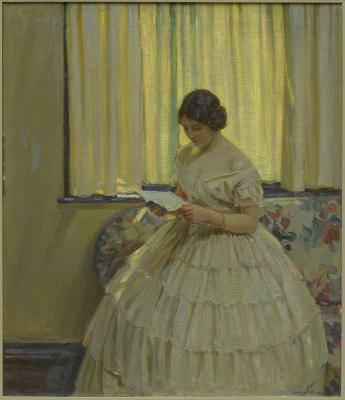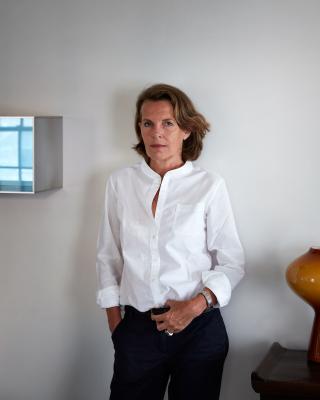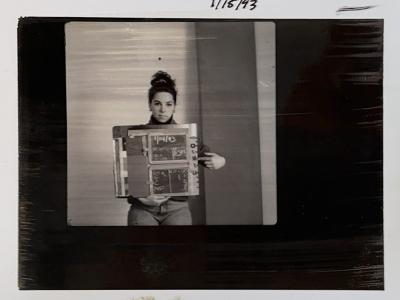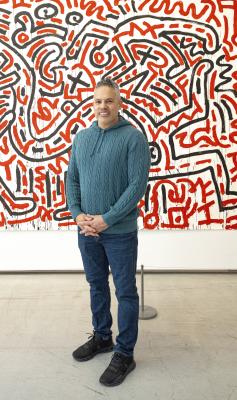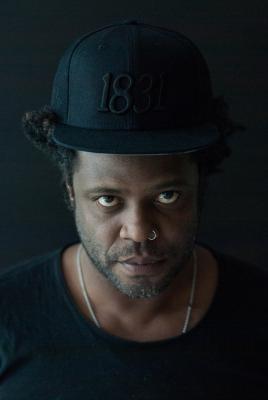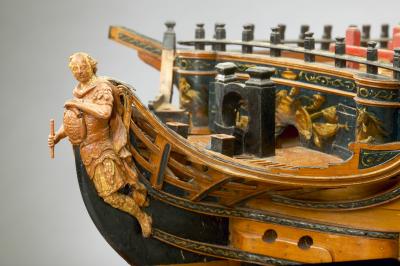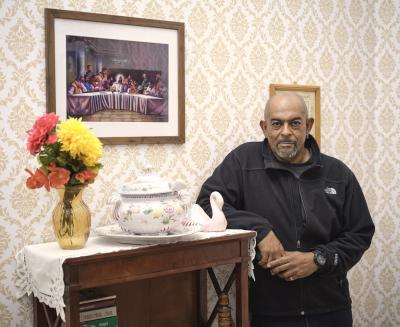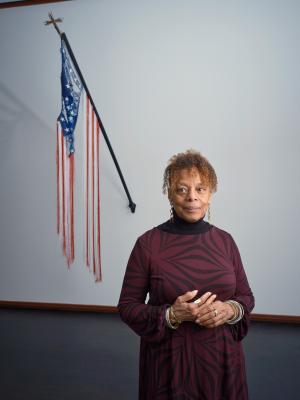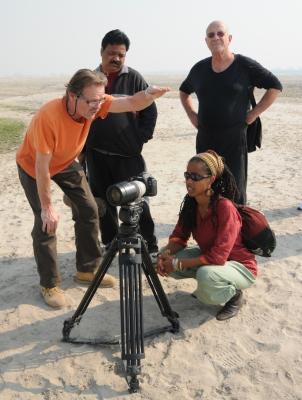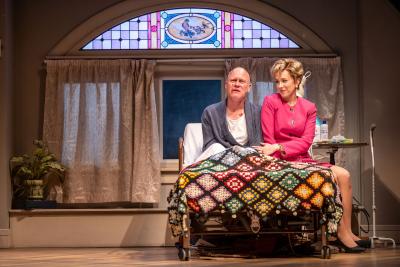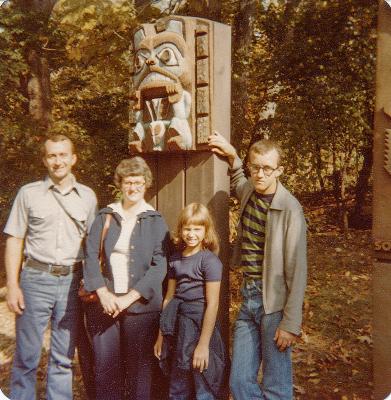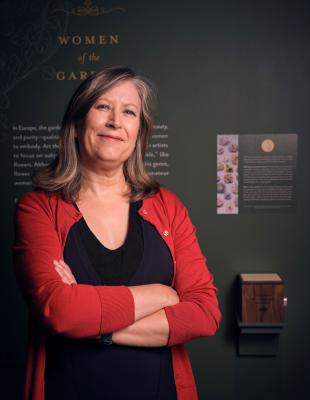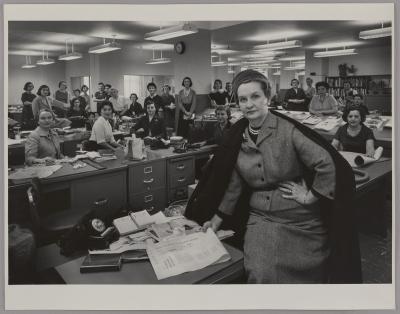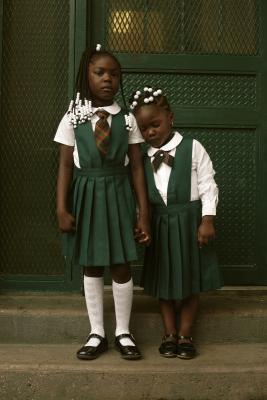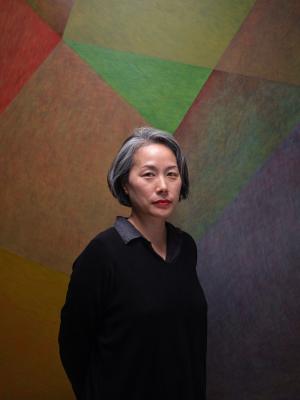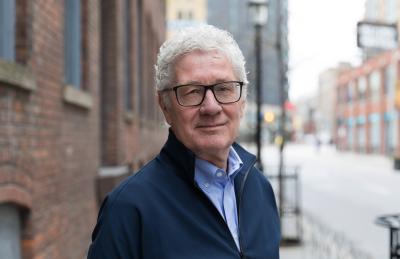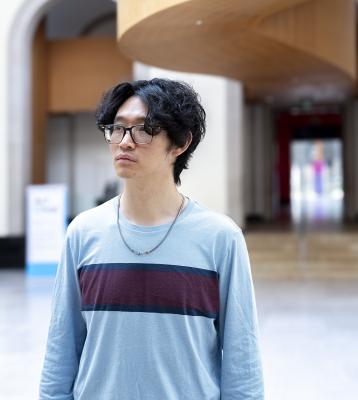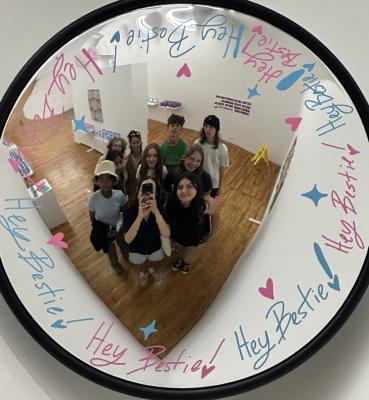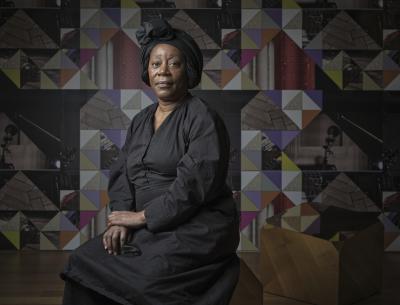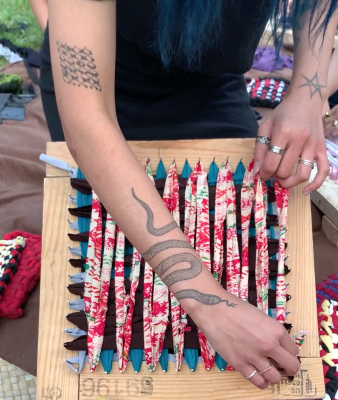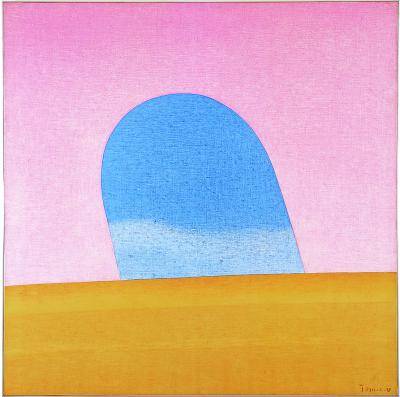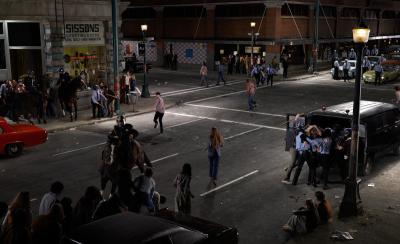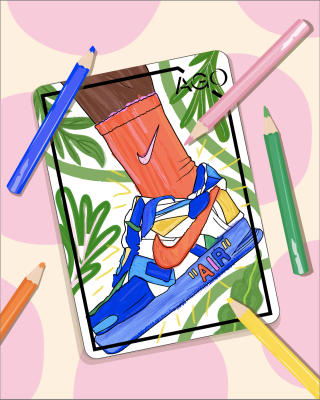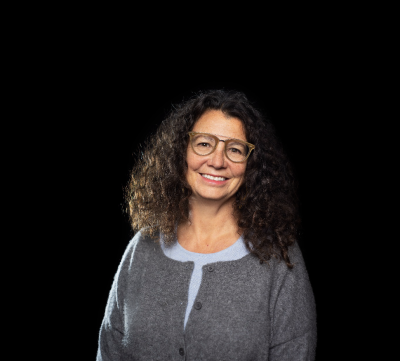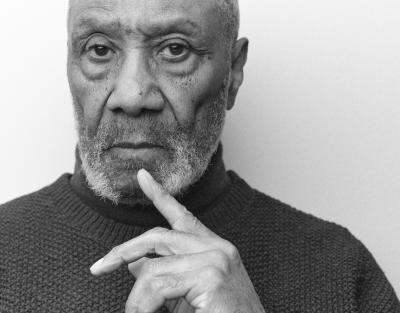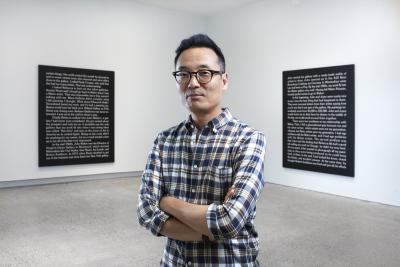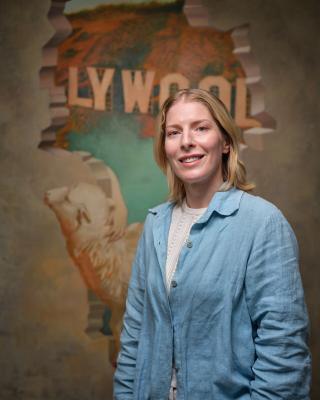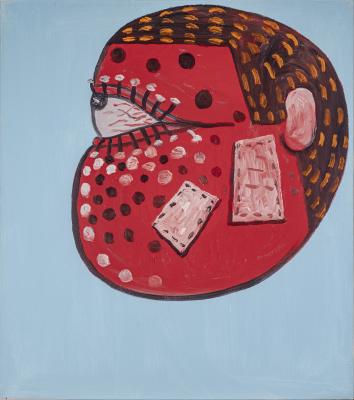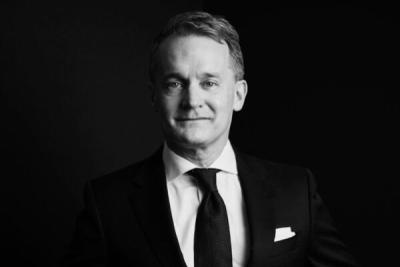Elizabeth Greenberg's photographic memories
The acclaimed photographer reminisces about her days working with Arnold Newman
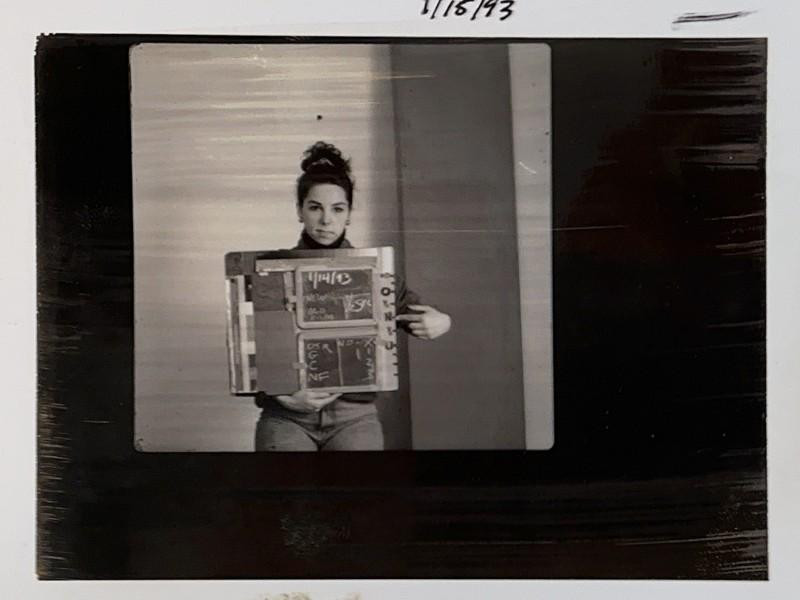
Arnold Newman, [Test shot with Elizabeth Greenberg], 1993. Black and white instant print. Courtesy of Elizabeth Greenberg © Estate of Arnold Newman
The best friendships develop over time. In the case of Elizabeth Greenberg, her relationship with the renowned photographer Arnold Newman was a long exposure – first from afar as a student of art, then up close in the classroom and darkroom as a pupil and studio assistant, then years later, as a friend receiving emails typed by assistants.
An accomplished photographer and educator in her own right, Elizabeth Greenberg arrives in Toronto to celebrate Building Icons: Arnold Newman’s Magazine World, 1938-2000, the first exhibition to feature works from the AGO’s collection of Newman photographs. Ahead of her public talk at the AGO, Greenberg told us about her inspirations, how she came to meet Arnold and why photography is like archeology.
This conversation has been edited for length and clarity.
Foyer: What led you to learn photography? When did you know it was to be your career?
Greenberg: When I was a first-year student in high school, I learned how to develop black-and-white film film and set up a makeshift darkroom. Immediately, I was learning a language that allowed me to communicate my experiences in the world and knew then that I wanted to pursue a career in photography and very specifically that I wanted to create that life in New York City.
At that time, my family was living in Scottsdale, Arizona and nearly every afternoon I would go out, exploring and making pictures. I often visited the public library and scoured through the small collection of photography books, one of which was Arnold Newman’s Artists. His portraits of artists provided insights into them, and their work which was fascinating to me as I was also studying art history and reading about the same artists he had photographed.
Foyer: How did you meet Arnold Newman?
Greenberg: I met Arnold at the Maine Photographic Workshops (now Maine Media) in 1990. When I was graduating college, I looked at the catalog for the Workshops and when I saw that all my photography heroes, including Arnold, would be teaching there I knew that was where I needed to be, despite having been offered a well-paying position elsewhere.
In the summer of 1991, I had the opportunity to be a Teaching Assistant for Arnold. At the end of his week-long workshop, he offered me the position as his full-time assistant at his studio in New York City.
Foyer: Can you describe the feeling in his studio?
Greenberg: I worked full-time at his studio from 1991 – 1994. It was a busy time for Arnold as he was still doing editorial shoots, commissioned private portraits, and producing his own new work, portraits of artists in and around New York.
In 1992 - 1993 Arnold set out to re-photograph many of the artists he had made portraits of earlier in his career, including Will Barnet, Alex Katz, Joel Meyerwitz, and Andrew Wyeth. It was an amazing experience to assist him on those sittings, meeting artists whose work I admired, and seeing how Arnold approached his familiar subjects with new insight. I have a particularly fond memory of joining Arnold to photograph Andrew Wyeth on his island in Penobscot Bay in Maine. Gus (Newman’s wife) joined for the day and as we docked Andrew exclaimed his joy at meeting Arnold's beautiful bride, as the last time Arnold had photographed him it was just prior to Arnold and Gus' wedding. The portraits Arnold made during that time became part of an exhibit at the Howard Greenberg Gallery that featured other never-before-seen portraits of artists he photographed earlier including Georgia O'Keefe and Gordon Parks.
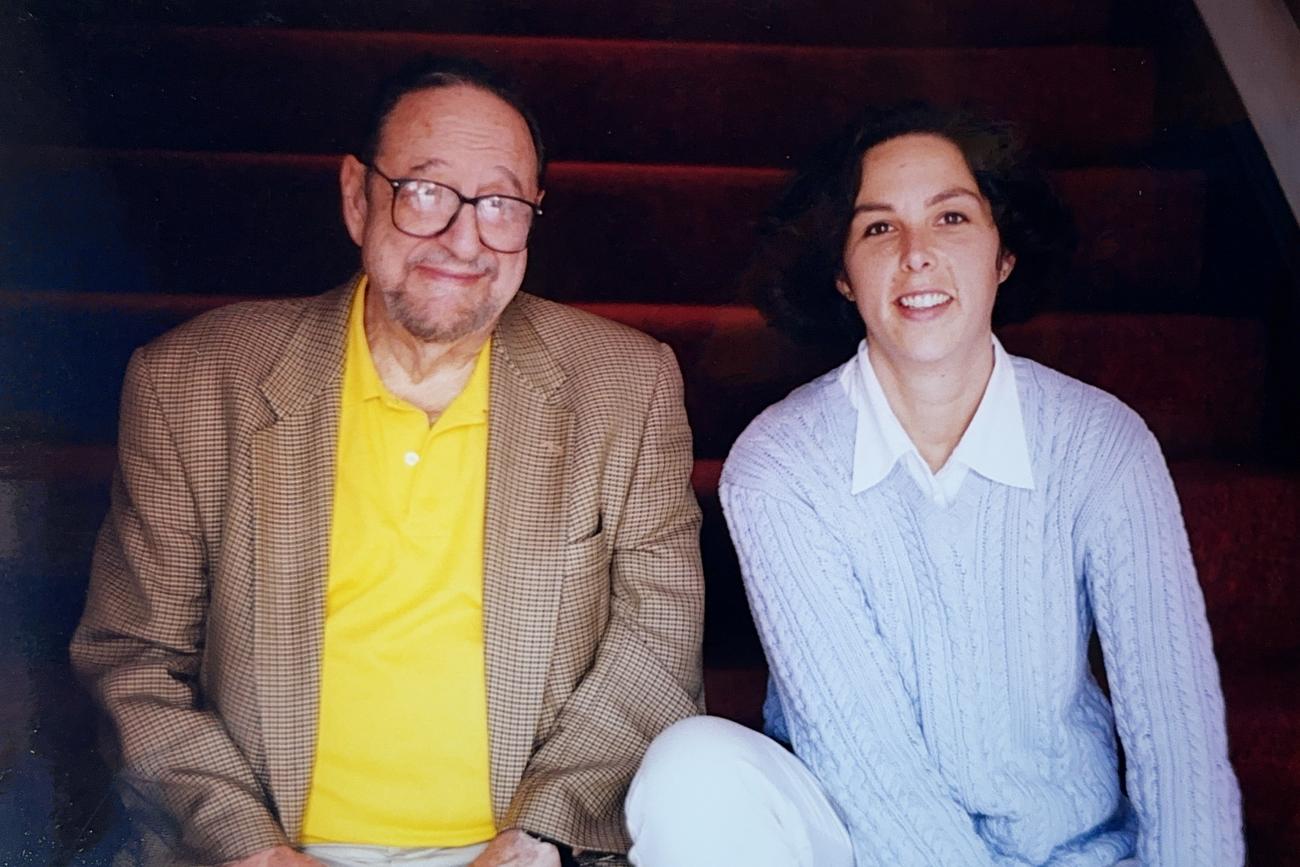
Elizabeth Greenberg and Arnold Newman, at Maine Media, 2000. Photo by Richard Ormanowsky. Courtesy Elizabeth Greenberg.
Foyer: By the 1980’s Newman was more than a photographer – he was an icon, equal to his subjects. Did his celebrity ever interfere with his art? Did he ever feel restricted by it?
Greenberg: Arnold was certainly aware of his successes, but sometimes it still surprised him. He approached every sitting with the philosophy that he had to first and foremost create a good photograph, no matter the sitter, client, or purpose of the job. He did not care so much about celebrity, rather, he cared about interesting people who made contributions to the world through art, science, and leadership. Though his notoriety provided access and respect from his subjects I cannot recall any instance where that interfered with his art, or he seemed restricted by it. More often, I sensed his surprise and enthusiasm for the connections that his career led him to.
Foyer: How did Newman respond to the advent of digital cameras and image editing software through the 90s? Was he interested in it, threatened or despairing?
Greenberg: Arnold fully embraced new technologies as they emerged in photography in the 1990s. I was fortunate to be witness to the very first (Nikon) digital camera and demonstration of Adobe Photoshop in 1990. I vividly recall Arnold, joined by other notable photographers including Joyce Tenneson and Mary Ellen Mark, passing that first digital camera around a small, crowded room. From that point forward the idea of digital cameras never threatened Arnold and by the mid – 1990’s as a Canon Explorer of Light he was provided with a full digital camera set up with lenses. He was a little intimidated by the complexity of the digital cameras and remember frequent visits by the Canon rep to the studio, to demonstrate the features. His interest and embrace of digital technology influenced how I accepted it, realizing that if Arnold could be so opening minded after a 60 plus year career using film, who was I to object to it?
Arnold certainly appreciated work being made by artists like John Paul Caponigro who were pioneering the possibilities of digital imaging. He was less a fan of computers and digital software. For as long as I worked at the studio, he had an old Olivetti manual typewriter and still used carbon paper for all his correspondence and business. I would bring my electric typewriter to the studio sometimes when we had a lot of typing to get done. When he got his first computer, I do not think he turned it on for months and was skeptical of it. Eventually he came around to that technology when it came time to digitize his archive and by the early 2000s, I would always get a kick out getting emails from him (clearly typed by his assistant).
Foyer: In your artist statement, you refer to your photography as a kind of archaeology. What kinds of things are you looking for when you take a picture? What does a viewfinder achieve that our eyes cannot?
Greenberg: I do think of myself as a visual archeologist and make photographs to imagine and express a sense of a place. I am always looking for evidence of what is no longer there, signs that suggest what may have been experienced, what is remembered, and what is yearned for. For me, imagination is that space between what we know, remember, and the mystery of the unknown and unseeable.
I absolutely love the medium of photography and the creative possibilities that a camera can provide. With a camera in hand, I am inspired to forget what I know and to truly look, to see what is in front of me. The concept of seeing a fraction of a second and all the extraordinary things that can happen during that brief encounter with time is what reminds me that nothing ever looks the same twice.
Don’t miss Elizabeth Greenberg in conversation with AGO Curator of Photography, Sophie Hackett, on Wednesday, October 25 at 7 p.m. For tickets and additional information visit ago.ca/events.
Building Icons: Arnold Newman’s Magazine World, 1938-2000, is on view now through January 21, 2024, on Level 2 of the AGO in the Sam & Ayala Zacks Pavilion.
